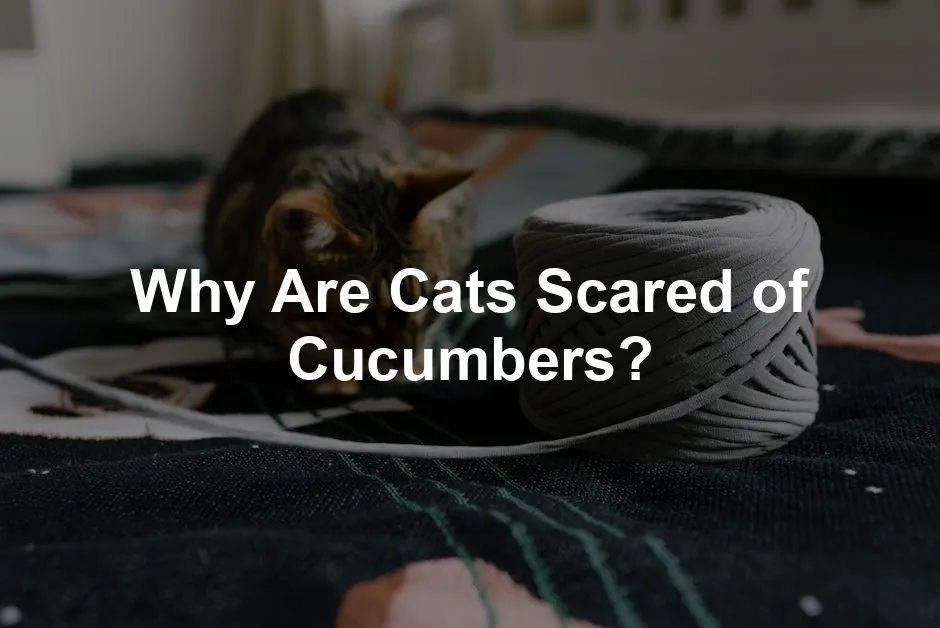
Why Are Cats Scared of Cucumbers?
Introduction
You might have seen those hilarious videos online. Cats leap into the air when they encounter cucumbers. While amusing, this phenomenon raises questions about why cats react so fearfully. Understanding this behavior is essential for cat welfare and helps us avoid causing them unnecessary stress.
Speaking of keeping your cat happy, have you checked out some great toys? A Cat Feather Wand Toy can provide endless entertainment and exercise, keeping your feline friend from turning into a couch potato!
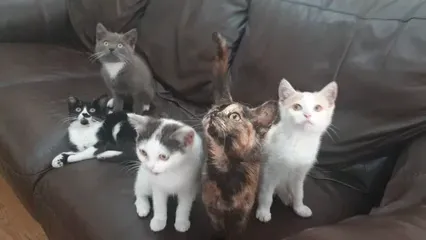
Summary and Overview
This article explores the intriguing behavior of cats and their fearful reactions to cucumbers. We’ll examine feline instincts, the psychology behind their fear responses, and the potential consequences of pranking them. It’s crucial to recognize that cats are sensitive creatures. Ignoring their feelings can lead to anxiety and mistrust. For further insights into managing anxiety in daily life, you might find it helpful to read about why coping strategies are essential for handling anxiety in daily life.
Understanding the impact of anxiety on cats can help us create a better environment for them. Learn more about coping strategies for managing anxiety.
Understanding Cat Behavior
The Basics of Feline Instincts
Cats are fascinating creatures with complex instincts. They are both predators and prey. This duality shapes their reactions to unfamiliar objects. As hunters, cats are naturally alert to potential threats in their environment. A sudden appearance of an unexpected item, like a cucumber, can trigger their instinctual defense mechanisms.
Cats rely on their keen senses to navigate their surroundings. This vigilance helps them stay safe. If something seems out of place, like a cucumber sneaking up behind them, it can provoke fear. Understanding that our feline friends thrive in familiar environments is essential. A calm space allows them to feel secure and less anxious.
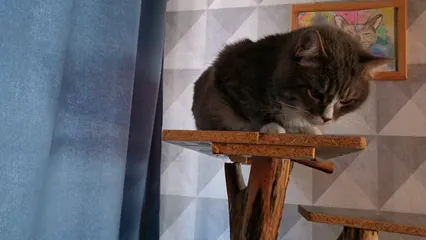
Why not give your cat an engaging way to explore their instincts? An Interactive Cat Puzzle Feeder can challenge their problem-solving skills while keeping mealtime fun and stimulating!
The Element of Surprise
Surprise plays a significant role in a cat’s fear response. Imagine walking into a room and suddenly spotting an unexpected object behind you. You might jump, and cats react similarly. Their startle reflex kicks in when they encounter something unfamiliar.
This reflex is a survival mechanism. Cats prefer predictability in their surroundings. When something unexpected appears, it can send them into a panic. For example, if a cucumber is placed behind a cat while it eats, the sudden sight can be alarming. This reaction emphasizes how important it is to keep their environments predictable and safe.

Theories Behind the Fear of Cucumbers
Cucumbers Resembling Snakes
Have you ever noticed how cucumbers can resemble snakes? This theory suggests that their elongated shape might trigger an instinctual fear in cats. Experts like Dr. Pamela Perry highlight this connection. She mentions that cats typically don’t have a natural fear of snakes. Instead, their reactions stem from the sudden appearance of something unfamiliar.
When a cucumber appears unexpectedly, it can ignite a cat’s instinct to be wary. Cats are both predators and prey, which means they’re naturally vigilant. The visual similarities between cucumbers and snakes can evoke a quick defensive reaction. This highlights how instinctual fears can shape animal behavior. Understanding these reactions is crucial for cat owners. By recognizing these instincts, we can create a safer environment for our furry friends.
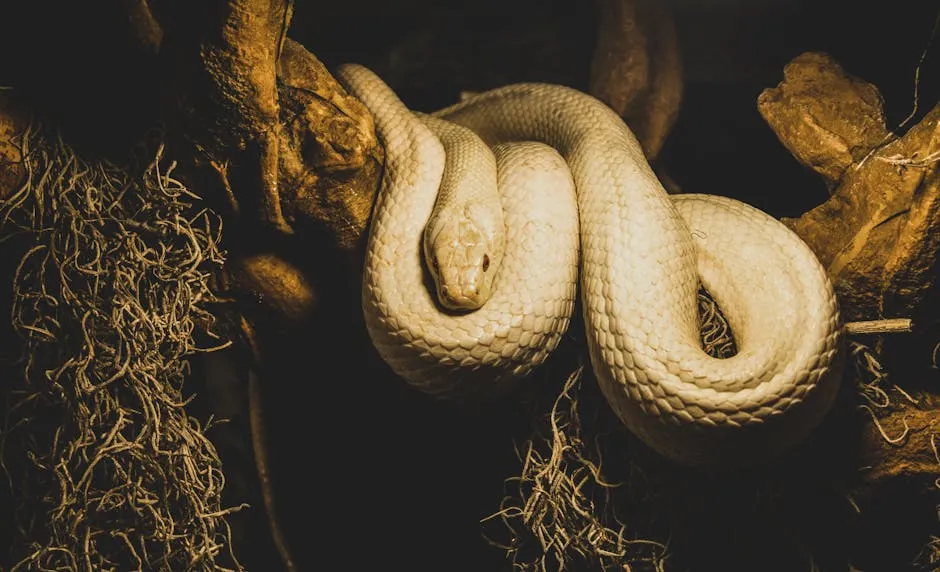
To enhance your cat’s safety, consider providing them with a cozy retreat. A Cozy Cat Bed can give them a secure spot to relax and recharge, helping them feel more at home!
Cats and Novel Objects
Cats are known for their curiosity. However, they can also be cautious around new things. When a cat encounters an unfamiliar object, it can trigger a mix of curiosity and fear. Behavioral studies show that cats prefer familiar environments. A new object, like a cucumber, can disrupt their sense of safety.
This reaction isn’t just about cucumbers. Cats often react similarly to other novel items. Their instinctual response is to assess potential threats. If a cucumber suddenly appears while they eat, the surprise can be alarming. This emphasizes the delicate balance between curiosity and caution in a cat’s psyche. Understanding their behavior helps us create a comfortable space where they can thrive.
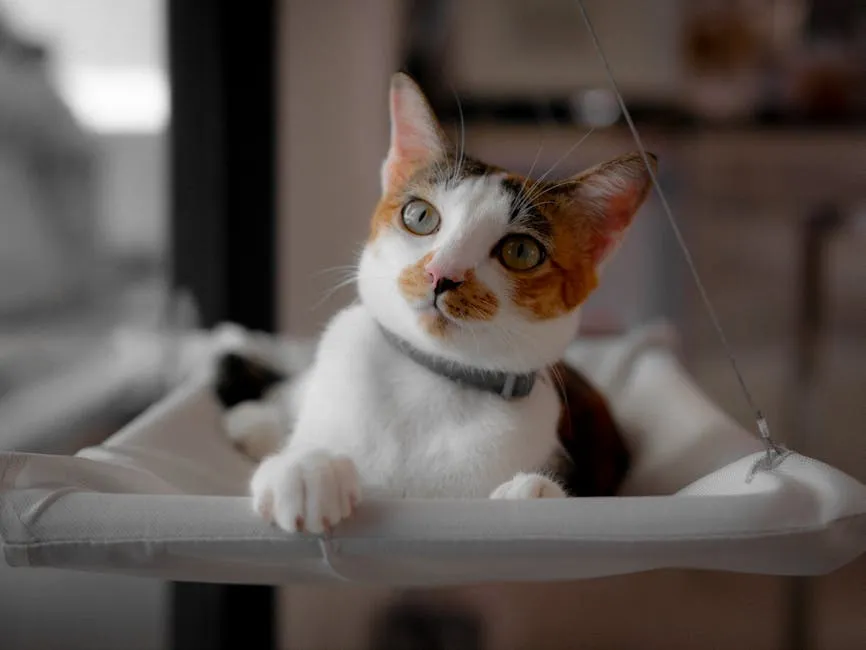
Alternatives to Scaring Cats
Engaging and Fun Activities
Instead of scaring your cat with pranks, let’s think of fun ways to bond. Playtime is essential for a cat’s happiness. Use toys that mimic prey, like feather wands or laser pointers. These activities stimulate their hunting instincts and keep them engaged.
Creating a safe environment allows your cat to explore freely. Designate spaces with climbing towers or cozy hiding spots. Cats love to perch high and observe their surroundings. Positive reinforcement is crucial too. Reward your cat with treats when they display desired behaviors. This builds trust and strengthens your bond. Remember, a happy cat is a healthy cat!

And speaking of treats, don’t forget to pamper your furry friend with a Cat Treats Variety Pack. It’s a great way to show them you care while keeping their taste buds entertained!
Creating a Safe Space
Every cat needs a secure space to thrive. Safety is key for their well-being. Start by designating a quiet area in your home. This can be a cozy nook with their bed, litter box, and food. Familiar objects, like their favorite blanket or toys, help enhance comfort.
Cats are territorial creatures. Respecting their space is vital. Ensure they can retreat to their safe zone whenever they feel anxious. By creating a predictable environment, you allow them to feel secure. This approach reduces stress and promotes overall happiness. A calm cat is also more likely to engage positively with you!
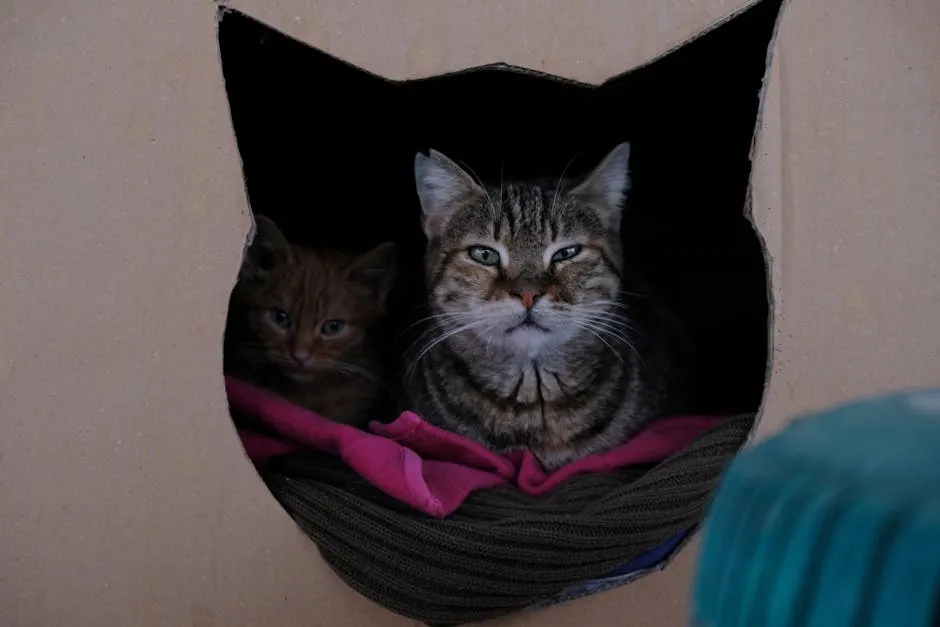
For an extra touch of comfort, consider a Cat Climbing Tower. It provides both a safe haven and a fun playground for your furry companion!
Conclusion
Understanding why cats fear cucumbers helps us treat them kindly. Their reactions stem from instinct and surprise. It’s crucial to foster a loving environment instead of playing pranks. Build trust with your cat through safe interactions and engaging activities. Let’s prioritize their well-being and enjoy the loving companionship they offer. Additionally, it’s important to understand the broader context of stress in modern society, which can impact pets as well. You can read more about why we feel stressed in modern society to gain insights into this issue.
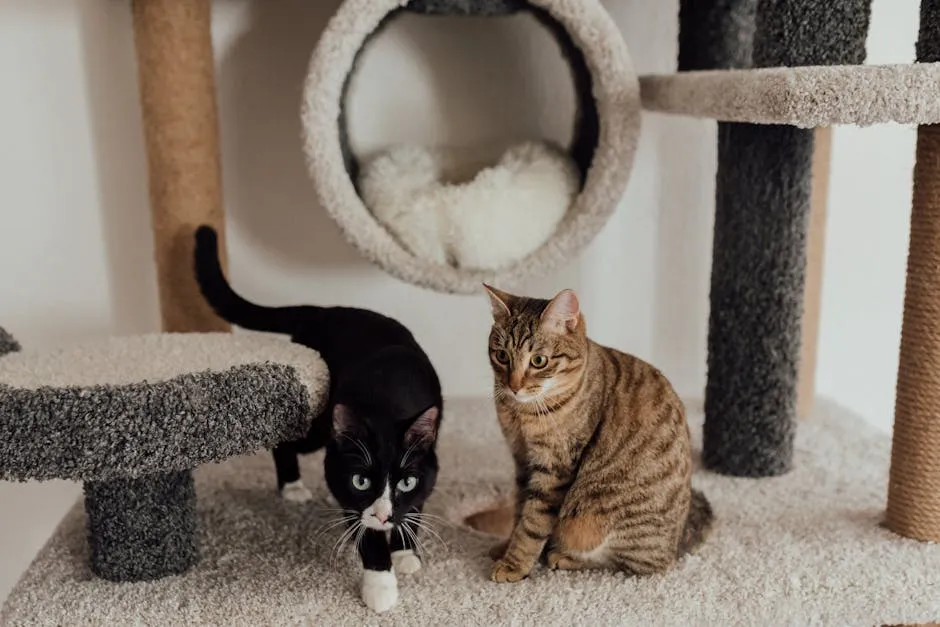
Understanding the stressors in our lives can help us create a better environment for our pets. Learn more about stress in modern society.
FAQs
Why do cats react so dramatically to cucumbers?
Cats often showcase dramatic reactions to cucumbers due to their startle response. When a cucumber suddenly appears, it triggers a reflexive fear reaction. This behavior stems from their instinct to be alert to unexpected stimuli in their environment. Cats are naturally cautious creatures. Their dramatic behavior is a way of processing surprise and potential threats.
Is it harmful to scare my cat with a cucumber?
Yes, scaring your cat with cucumbers can be harmful. Such pranks induce stress and anxiety in your pet. Cats thrive in a predictable environment. When surprised, they may develop long-term behavioral issues. This can lead to fearfulness around food or their owner. Prioritizing your cat’s emotional well-being is crucial.
Are there other objects that scare cats?
Absolutely! Cats can be startled by various objects. Common items include vacuum cleaners, loud noises, or sudden movements. Even unfamiliar toys can provoke fear. Cats tend to dislike surprises, especially when they feel safe. Keeping their surroundings stable helps reduce anxiety and fear responses.
How can I help my cat feel less anxious?
To help your cat feel calm, create a safe space. Provide cozy spots and familiar objects. Engaging with them through play can also reduce anxiety. Use interactive toys that stimulate their instincts. Offering treats during stressful situations can help them associate positive experiences with triggers.
What should I do if my cat is constantly scared?
If your cat shows constant fear, observe their behavior closely. Identify triggers causing anxiety and minimize exposure to them. Gradual desensitization can be effective. Encourage positive interactions and spend quality time with your feline friend. Consulting a veterinarian for tailored advice can also be beneficial.
Can cats be trained to overcome their fears?
Yes, cats can be trained to manage their fears. Techniques like desensitization help them gradually adapt to anxiety-inducing situations. Positive reinforcement, like treats or praise, can encourage desired behaviors. Patience is key, as each cat responds differently. Building trust will enhance their confidence over time.
What are some signs that my cat is stressed?
Common signs of stress in cats include hiding, excessive grooming, or changes in eating habits. Cats may also display aggression or frequent vocalizations. Pay attention to their body language. A twitching tail or flattened ears indicates discomfort. Recognizing these signs will help you address their needs effectively.
Please let us know what you think about our content by leaving a comment down below!
Thank you for reading till here 🙂
And remember, keeping your cat entertained is essential! Check out a Cat Play Tunnel for hours of fun. They’ll love darting in and out, and you’ll love the laughter it brings!
If you’re looking to keep their fur looking fabulous, a Pet Grooming Glove can be a game-changer. It’s a gentle way to bond while keeping their coat shiny and free of loose hair!
All images from Pexels




